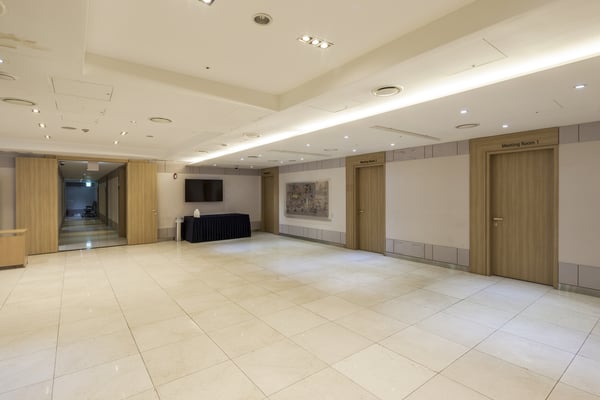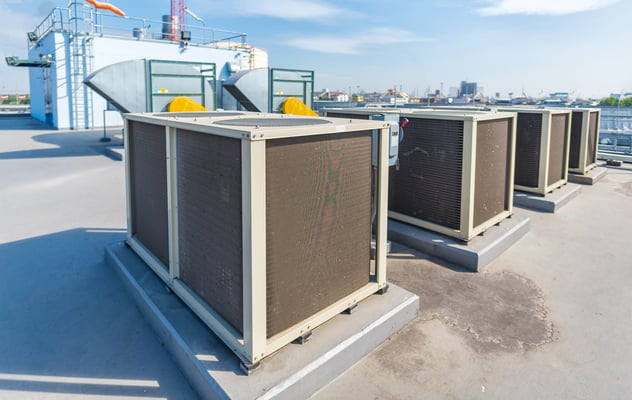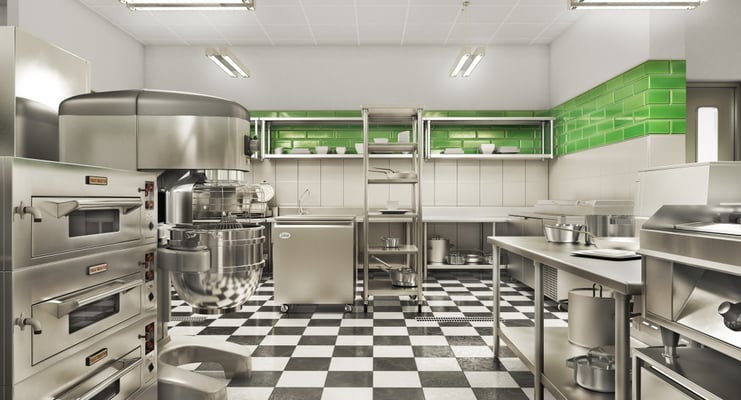How to Save Energy in a Franchise

Buildings represent around 33% of energy consumption and 40% of emissions around the world, according to the International Energy Agency. This also applies to franchise locations, where energy bills are combined with many other expenses. However, franchisees can reduce their costs with energy efficiency, leaving more cash flow for expenses like royalties and rent.
Franchises have stringent requirements when opening a new location, which are normally described in operation manuals. Some franchises also provide sample construction drawings to be used as a reference. These factors limit design flexibility, compared with starting a new business from zero. However, there are many ways to save energy, and MEP engineers can select measures that are compatible with franchise requirements.
Are you planning to open a franchise? Get an energy-efficient design for your commercial space.
In this article, we will discuss some effective energy efficiency measures for the franchise sector. Each franchise has its requirements, but there are basic design principles that can be applied in most cases. For example, lighting and HVAC are among the top energy expenses in commercial buildings. Energy consultants often recommend LED lighting for this reason, as well as HVAC units with high-efficiency ratings and smart controls.
Using LED Lighting in a Franchise

Franchises have detailed requirements for new locations, which often include the lighting color and layout. LEDs are characterized by their versatility, and they are a viable option for any commercial space:
- Thanks to their small size, LEDs are to manufacture lamps of any shape.
- LEDs can also be designed to produce any lighting color, meeting the needs of different businesses.
For example, restaurants often use warm tones of light to create a relaxing environment. On the other hand, gyms normally use cooler tones, which have an energizing effect. In lighting design, this is described by the correlated color temperature or CCT: a lamp with a CCT of 2700K produces a warm yellow light, while a CCT of 6500K results in a bluish tone. Compared with older lighting technologies, LEDs can be designed to produce any CCT.
Note that CCT is not the actual temperature of a light bulb. Just like distance is sometimes measured with time units (“my apartment is 10 minutes away from my office”), lighting designers use temperature to describe color.
The savings achieved by LED lighting will depend on the lamp types that are being upgraded, but you can expect savings in the range of 30% to 90%. LED lighting typically achieves a payback period of less than 3 years in commercial applications, while being covered by a 5-year warranty if you purchase quality brands.
Efficient Heating and Cooling for Franchise Locations

Unless your franchise uses specialized equipment with a high energy consumption, HVAC will probably be your top energy expense. Having a comfortable indoor temperature is very important in the franchise sector, especially in restaurants. Customers will want to stay more time, and they are likely to spend more.
Air conditioners are necessary in summer, and space heaters are equally important during winter. However, the importance of ventilation is sometimes ignored:
- When a commercial space has adequate ventilation, pollutants and airborne germs are quickly removed from the indoor air.
- Ventilation systems can be equipped with features like an energy recovery system or an economizer, which reduce HVAC costs in general.
Smart controls can reduce ventilation when franchise locations have low occupancy, which also saves on heating and cooling. However, this measure is not recommended by ASHRAE while the COVID-19 pandemic is active, since reduced ventilation gives more chance for viral particles to accumulate in the air.
Regardless of the HVAC equipment used in your franchise, you can save energy by purchasing high-efficiency units. Boilers and furnaces use the Annual Fuel Utilization Efficiency (AFUE), while air-source heat pumps use the Heating Seasonal Performance Factor (HSPF). On the other hand, air conditioners use different energy efficiency ratios (EER) depending on their type. As the energy efficiency of HVAC units increases, their operating cost for a given indoor area decreases.
Energy Efficiency Measures for Specialized Franchise Equipment

Depending on the franchise sector, there may be specialized equipment with a high energy consumption: dry cleaning and commercial kitchens are two examples. The design requirements vary depending on franchise specifications, but the basic principles of energy efficiency always apply:
- Selecting equipment that meets franchise requirements and gets the job done, while consuming as little electricity and gas as possible.
- If the franchise uses any equipment with motors, they should have a high-efficiency rating such as NEMA Premium or IE4.
- Whenever possible, smart controls should be deployed for energy-consuming equipment.
There are many costs when starting a franchise, which include upfront fees and the commercial fit-out project. When you open there are operating costs and royalties, and if you took a loan there is also interest payment. Energy efficiency reduces the operating costs of a franchise, increasing your profit margins and improving your chance of success.

Anuj Srivastava
Anuj Srivastava is a principal partner at NY Engineers. He is known for his MEP franchise market knowledge. Anuj is currently leading a team of 100+ MEP/FP engineers and has successfully led over 1500 franchise projects in the US.
Join 15,000+ Fellow Architects and Contractors
Get expert engineering tips straight to your inbox. Subscribe to the NY Engineers Blog below.
